Stay in the know on all smart updates of your favorite topics.
CleanMobilEnergy – A Smart Energy Management System integrating renewable energy and electric vehicles.

Across North West Europe, cities are increasingly investing in renewable energy production and charging infrastructure for electric vehicles. However, the control systems for energy generation, energy utilisation, energy storage and electric vehicle charging work are currently separate from each other. This results in high costs and CO2 emissions due to energy inefficiencies.
Electric vehicles are mostly powered by fossil fuel generated electricity. At the same time, renewable energy is inefficiently utilised because production and demand are not synchronised across the city.
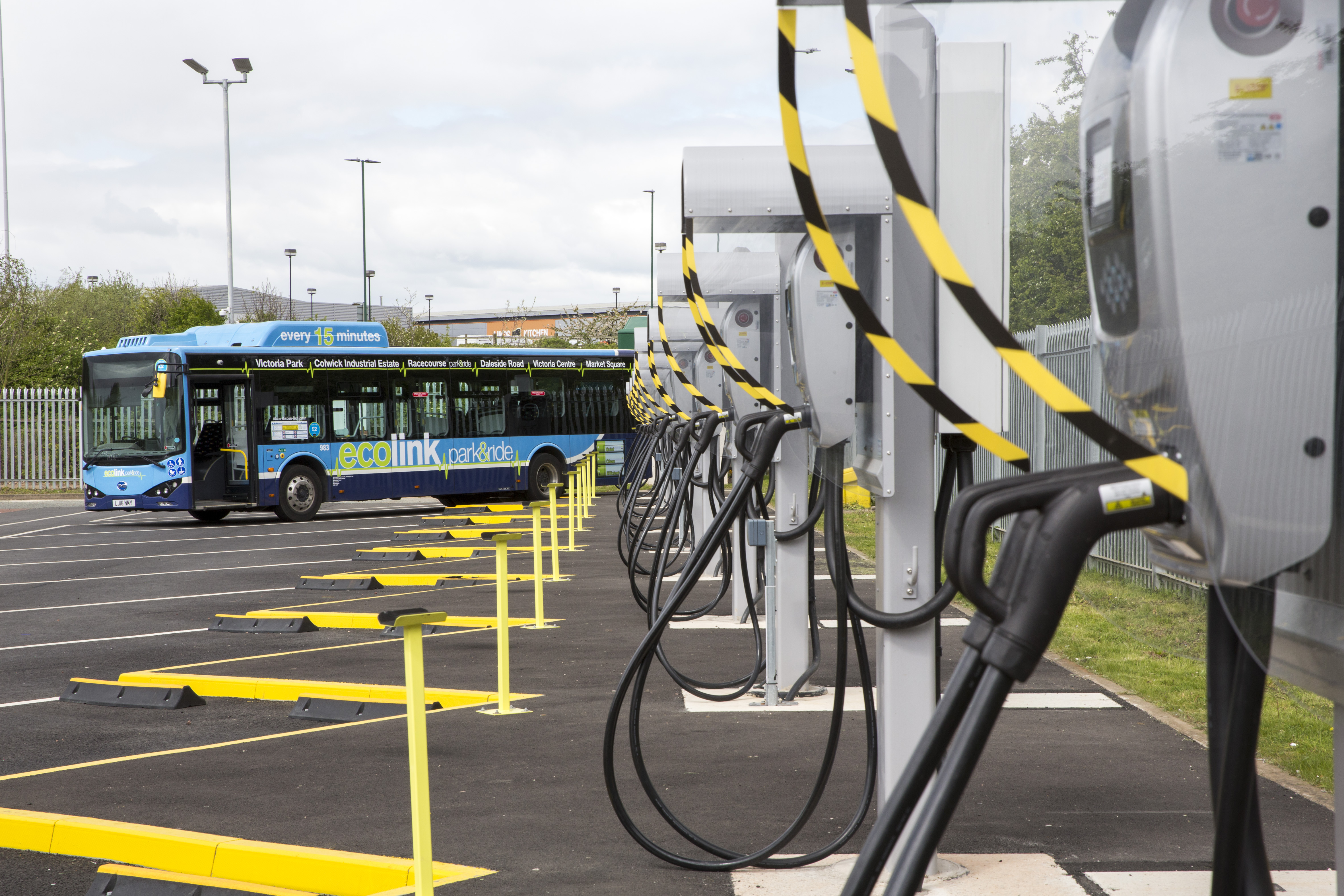
The project CleanMobilEnergy will integrate various renewable energy sources, storage devices, electric vehicles and optimisation of energy consumption through one unique smart energy management system. The development of this intelligent Energy Management System (iEMS) will increase the economic value of renewable energy and significantly reduce CO2 emissions.
The iEMS will assure the smart integration through interoperability based on open standards for data flows and analysis tools.CleanMobilEnergy will make it possible for renewable energy sources to be used locally, so electric vehicles can be charged with 100 % renewable energy offered at an optimum price. Electrical energy from the grid will only be required when prices are low or renewable energy sources are not available, the iEMS monitors and optimises the system 24hours a day, 7 days a week.
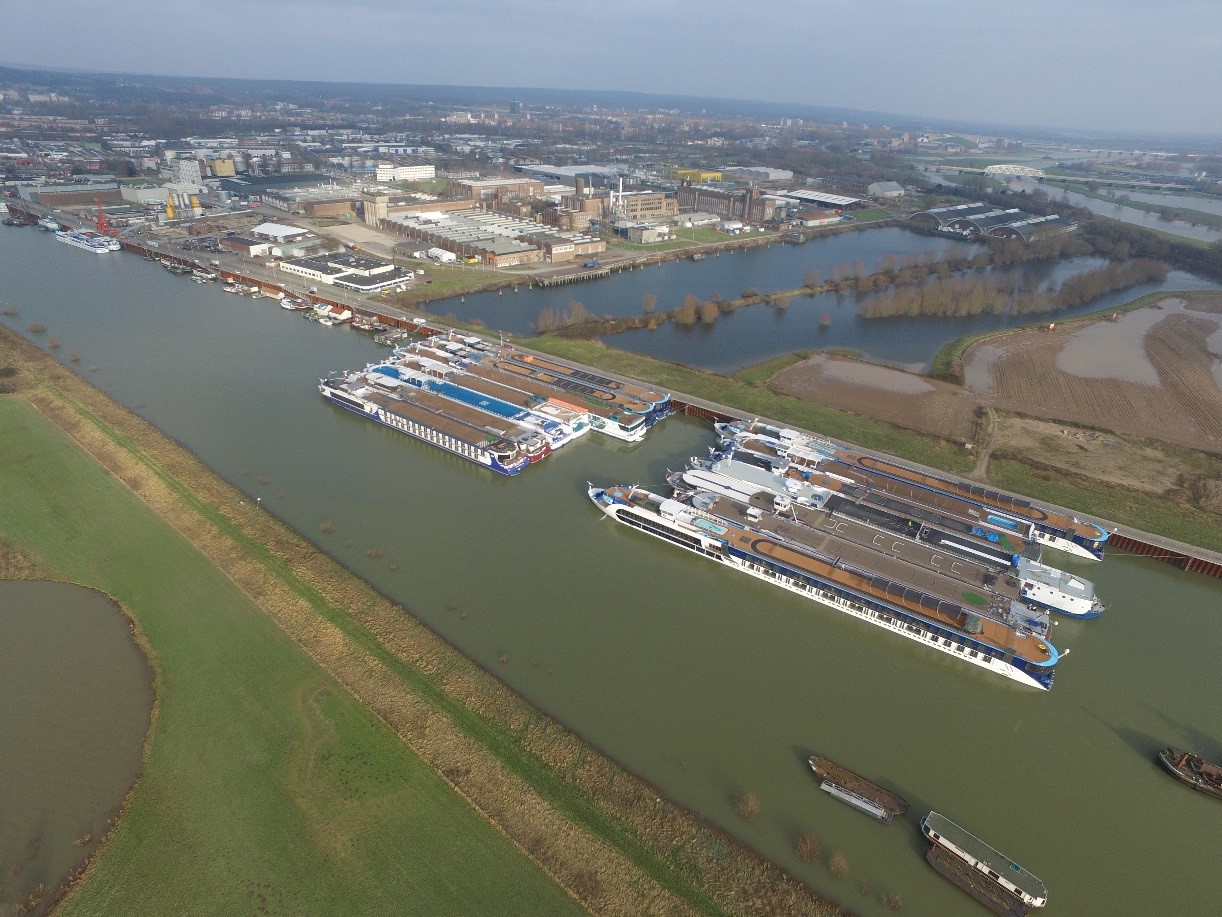
One generic transnational iEMS will be adapted to the 4 specific City Pilots, in Arnhem, London, Schwäbisch Gmünd and Nottingham. These pilots range from small towns to large cities. The 4 City pilots cover different types of renewable energy, storage and electric vehicles as well as different contexts and diverse city environments.
The City Pilots will utilise different state-of-the-art storage media in various environments, which are representative of North West Europe and are easily replicated in other cities across Europe. Specifically in London and Nottingham, for example, electric vehicles themselves will be used to power the buildings and depot by using innovative bi-directional chargers controlled by the integrated energy management system iEMS.
In Arnhem, on the other hand, renewable energy will be supplied to ships in the harbour adjacent to its industrial area. These pilots were chosen to represent a wide range of city sizes and environments, which are essential to developing a widely applicable system for future implementation across Europe.
Circular strategies for mitigating surging critical metal demand
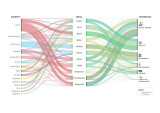
One of the biggest challenges for the transition to cleaner energy systems is the vast amount of critical metals required. But where do those metals come from, and what technologies are they needed for?
The Industries Team at Metabolic explored these questions and proposed circular strategies to reduce the critical metals demand significantly. Find out more about the project in the link below.
The challenges in the circular energy transition
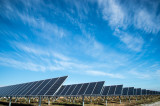
The energy transition is in full swing. Besides manpower, it requires a lot of materials, products and infrastructure. Windmills, solar panels, batteries and water pumps contribute fully to this transition, but are still hardly purchased, produced or reused in a circular manner. With the global economy changing and the shortages of raw materials growing, it’s important to look at the materials we use in the energy transition. How can we limit the negative impact of these materials needed for the energy transition?
It's clear that this question is on the minds of several partners. For example, at the Transition Days 2021, the Province of North Holland suggested that a knowledge agenda should be drawn up. In the meantime, our partners AMS Institute and the City of Amsterdam have started a project aimed at the reuse of solar panels in Amsterdam-Southeast and linked this with social issues. Next to that, the companies Pontiflex and Cenex Netherlands (in collaboration with the University of Applied Sciences) are focusing on the reuse of wind turbine components in new bridge structures and EV batteries.
On March 17, Amsterdam Smart City organized a work session during the Demoday Circular & Energy so our partners could discuss their input and vision on the importance of a circular energy transition. Some think it's important to have an ''integrated approach to circularity and energy'', others seek further ''stimulus that enables circular reuse of materials''. But if we want to scale up the energy transition circularly, what obstacles and opportunities do we see together? The challenges and obstacles are mapped for the different physical products via the digital tool Miro. Check out the English version of the Miro board here.
The key challenges raised by the participants:
1. Not all procurement procedures allow for circular material use or are limited to steel and concrete. Or requirements and criteria do not match.
2. Local and regional logistics in relation to transport and labor costs.
3. The business case: often a low financial return and therefore less attractive to the market. Practice shows that to be able to experiment, subsidy or other funding is needed.
4. Laws, regulations and certification of circular products stand in the way. Often the same norms and standards must be applied as for new products.
5. Education to encourage a new generation of students to work more with biobased and circular materials in projects
Now that the obstacles are visible, the challenge is to find a common approach. Through a follow-up session, Amsterdam Smart City will invite the partners again to think about the next steps. In the end we need each other to take the circular energy transition one step further.
If you have any thoughts on this topic or have a related question for us, please let us know in the comments or send an email to francien@amsterdamsmartcity.com.
Marktconsultatie energievoorziening Amsterdam-West: de resultaten

De stad Amsterdam groeit hard, de samenleving digitaliseert én we willen zo snel
mogelijk overstappen op duurzame energiebronnen. Deze factoren samen veroorzaken letterlijk spanningen op het elektriciteitsnet, onder andere in Amsterdam-West.
In het voorjaar van 2021 organiseerde de gemeente Amsterdam daarom samen met netbeheerder Liander een marktconsultatie. Het doel: creatieve en innovatieve ideeën ophalen om ons elektriciteitsnet zo flexibel, efficiënt en toekomstbestendig mogelijk te maken.
Hieronder vind je een greep uit de behaalde doelen en resultaten:
· Het bedrijfsleven denkt oplossingsgericht mee over de uitdagingen rondom de
elektriciteitsvoorziening
· Verkenning en inventarisatie van technieken die een bijdrage kunnen leveren aan het
versterken van ons elektriciteitsnet
· Inzicht in de laatste stand van zaken betreffende bekende technieken
· Update van actieve marktpartijen op het gebied van flexibiliteit
De volledige terugkoppeling van de marktconsultatie vind je via de link onder dit artikel.
Vervolgstap: voorbereiding aanbestedingsproject
De marktconsultatie heeft er mede toe geleid dat netbeheerder Liander voldoende kansen en mogelijkheden ziet om de uitdagingen rondom de elektriciteitsvoorziening in Amsterdam-West succesvol aan te pakken. Het bedrijf is daarom gestart met de voorbereiding van een aanbestedingstraject.
Bijeenkomst aanbesteding Westhaven
In het verzorgingsgebied van verdeelstation Westhaven is sprake van congestie. Als tijdelijke oplossing zal Liander in dit gebied congestiemanagement toepassen totdat het netwerk verzwaard is. Om bestaande en nieuwe klanten, dienstverleners en marktpartijen te informeren over het oplossen van de congestieproblematiek en de aanstaande aanbesteding, organiseert Liander een informatiebijeenkomst.
U bent welkom op woensdag 23 maart van 15-17 uur in de PRODOCK-ruimte van Port of Amsterdam (Moezelhavenweg 9, 1043 AM Amsterdam). Met vragen over de bijeenkomst kunt u terecht bij Stef Lammers (stef.lammers@alliander.com).
Consultation on energy supply in Amsterdam-West: the results

The city of Amsterdam is growing fast, society is digitizing and there is an urgency to switch to sustainable energy sources as soon as possible. Together, these factors are pushing the electricity network to its limits, also in Amsterdam-West.
In the spring of 2021 the City of Amsterdam, together with grid manager Liander, organized a market survey. The aim was collecting creative and innovative ideas to make the electricity network in Amsterdam as flexible, efficient and future-proof as possible.
Below is a selection of the goals and results that were reached:
· The business community agreed to think along solution-oriented lines about the challenges surrounding the electricity supply
· An exploration and inventory of technologies that can contribute to strengthening our electricity network was made
· Insight into the latest state of affairs regarding known techniques was gathered
· An update of active market players in the field of flexibility was provided
All information about the market consultation can be found here
Next step: preparation of the tender
One of the results of the market consultation was that grid manager Liander now sees sufficient opportunities and possibilities to successfully tackle the challenges surrounding the electricity supply in Amsterdam-West. The company has therefore started preparing a tender process.
Meeting about Westhaven tender
There is congestion in the catchment area of Westhaven distribution station. As a
temporary solution, Liander will apply congestion management in this area until
the network capacity is enhanced. Liander is organising a meeting to inform
existing and new customers, service providers and market parties about solving
the congestion problem and the upcoming tender process.
You are kindly invited in the PRODOCK room of Port of Amsterdam (Moezelhavenweg 9, 1043 AM Amsterdam) on Wednesday 23 March from 3-5 pm. If you have any questions regarding the meeting, please contact Stef Lammers (stef.lammers@alliander.com)
De duurzame toekomst van Amsterdams afvalwater
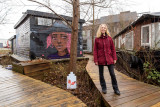
Als je de wc doortrekt, denk je waarschijnlijk niet na over wat er met het water gebeurt. Maar hier gaat een hele wereld achter schuil! En er wordt hard aan gewerkt, om die verborgen waterwereld duurzamer te maken. Als innovatietechnoloog bij Waternet houdt Enna zich bezig met het ontwikkelen van slimme afvalwatersystemen, en wij van De Gezonde Stad interviewden haar.
Wat is jouw droom voor Amsterdam?
“Dat water voor Amsterdammers meer waarde heeft. Dat we het meer respecteren. Nu is het zo vanzelfsprekend dat er water uit de kraan komt, zoveel en wanneer we maar willen. En we gaan naar het toilet, of onder de douche, of zetten de afwasmachine aan, en voor de bewoners is het water weg. Het zou fijn zijn als de hele cyclus meer circulair is. Dat afvalwater niet langer iets is wat vies is, maar dat we het gaan zien als een grondstof die we graag willen hergebruiken. Wat nou als je bij de bouwmarkt een toilet kan kopen die jouw urine apart houdt en daar meststof uithaalt die je zelf in je tuin kan gebruiken of af kan geven alsof het een statiegeldsysteem is. Dan krijgt het zoveel meer waarde.”
Lees op onze website het hele interview en leer de verborgen waterwereld kennen!
Some of the most inspiring projects of 2021 during our 14th Demoday!
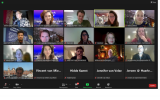
On December 14 2021, we had a very special demo day. Of course, it was the last of the year. As the Amsterdam Smart City core team, we are very proud of all the collaborations our partners and community started and that's why we wanted to highlight a few of them. To give the demoday a typical Christmas vibe, the pitchers had a 'gift' for the participants: their lessons learned that everyone could benefit from. And the participants had a gift in return: answers to the questions of the pitchers. In short, a demo day with new projects, questioning and sharing insights!
Responsible Sensing Lab and Drones
Hidde Kamst of the City of Amsterdam tells the participants about the Responsible Sensing Lab, a collaboration between the municipality and AMS Institute. This Lab works on the implementation of (social) values in technology in the city. Cameras and sensors in public space can put values such as privacy and anonymity under pressure. The Responsible Sensing Lab researches and designs alternatives. This also applies to the subject of Responsible Drones. A group of civil servants, companies and knowledge institutions worked on a vision on the responsible use of drones. The subjects 'proportionality', 'communications' and 'rules of the game' were discussed.
Hidde’s lessons learned: behind the scenes there are many parties working on drones, but the involvement of residents and civil society is low. It is important to change this because drones can have a big impact on our society. In addition, it is a complex topic where more research is needed. Hidde's request for help 'How do you convey the urgency of a subject that is important, but not yet urgent?' was very recognizable for the participants. A selection of their ideas: repeat the urgency over and over again, visualize the urgency, use storytelling and name the risks.
Shuttercam and Measuring Public Space
Pitch 2 had a big link with Hidde's story. Tom van Arman does various sensing projects on the Marineterrein, also covered by the Responsible Sensing Lab. An example is the Shuttercam, a camera that citizens can put on or off. In this way they can have an influence on the technology in the city. We start Tom's pitch with a question to the participants. Do they find it important that we measure a lot and collect data to improve the city or would they rather see more privacy for residents? A question that provokes discussion.
Tom has been engaged in measuring and testing in the public space for years, with an important role for public values. That's why he learned a lot of lessons: make sure you take the time to get legislation in order, take vandalism into account, do everything you can to make your work understandable for citizens. And a very nice one to remember: a hot camera attracts many insects. They block the image or get into the devices. One of the best tips he got from the participants: let passers-by write down what they see. That way you can get great feedback.
Braking energy and Pilot OV E-hub
André Simonse from Firan (Alliander) introduced us to the 'braking energy' issue, or as it is now is called: the OV E-hub pilot. This started as a search with partners such as AMS Institute, Arcadis, the City of Amsterdam, the
VRA and Alliander. Now the process evolved into a collaboration between Strukton Rail, Hedgehog Applications and Firan. Big cities can no longer cope with the increasing demand for sustainable energy. This makes it more difficult to access mobility hubs, such as stations, to provide electricity. It is therefore important to use existing energy smartly.
The lessons learned in this pitch were about taking action. Although talking is important for ideation and understanding and trusting each other, the art is to work together on a targeted plan for implementation. André's request for help was on how to organize political support. Willem from the City of Amsterdam wants to be part of the initiative and can help to achieve official support.
Social side of hubs
Willem van Heijningen of the City of Amsterdam took the floor to tell us more about its hub mission. A hub can organize mobility in an effective way. Together with others, he is looking how Q-park Europarking in the center of Amsterdam can be transformed to a hub. Think of shared mobility, charging cars and logistics, while preserving the monumental character of the city. Hearing the word ‘hub’, many people will think of a place to connect different forms of mobility. But it is also about energy. At some point, vehicles, vessels or even drones will come by. Since we want to get rid of fossil fuels, a hub will also become the place where these forms of mobility are charged. The success or failure of hubs is all in the hands of people. It depends on their behavior whether hubs will be useful. Until now, they have got too little attention. T
his is where Willem could use some help: What is needed to bring the social aspect of hubs further? How does the hub prove its effectiveness towards humans? A selection of the answers from the group: investigating the needs of the residents, connect with existing social initiatives in the city, involve local entrepreneurs.
ArenAPoort LIFE
Else Veldman and Hans Roeland Poolman from AMS Institute took us on a tour to their Southeast Energy Lab. This is a collaboration to accelerate sustainability in the southeast of Amsterdam through practical research, meetings and concrete projects. One of the current projects is the LIFE project, an open platform to plan energy supply and demand in a smarter, inclusive way. An enormous ambition that is driven by partners such as Johan Cruijff ArenA, Alliander, Spectral, CoForce and the Utrecht University. AMS Institute is committed to ensuring this platform is not only a technical contribution to the energy transition, but also provides social value to the inhabitants of South-East.
Hans and Else asked the network to think about the latter. The result was a tidal wave of tips to involve residents: co-develop communication strategies such as storytelling and visualization, pay attention to the result, the dream, show what it means to participate in the process, and above all, invest time.
New narrative for the energy transition
The last pitch was about the New Narrative where Kennisland and What Design Can Do on behalf of RES Noord-Holland have been working on. Dave van Loon from Kennisland told us that a new story about the energy transition is being developed to move away from the negative image, people's concerns and to give a new impulse to the energy transition. This narrative is based on a design thinking process. Subsequently, the organizations developed building blocks to focus on:
- a shared sense of urgency
- a positive future perspective
- inspiration by concrete and recognizable examples and success stories
- a sense of pride
- a way to take of action
Dave's request for help was for a reflection on this process. And the reactions were praising. On the one hand, the feedback focused on how to make the story as concrete as possible for the target groups and on the other hand on reaching the masses, while incorporating those who are left behind.
The next demoday will take in place in February or March. Do you have a nice story to tell or would you like to join as audience? You are more than welcome! Drop a line below to let us know!
Amsterdam Smart City End-of-year-Demoday
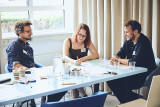
Demodays are part of our innovation process and intended to boost the progress of the various innovation projects, put requests for help on the table, share dilemmas and involve others in your projects or challenges. We host them every 8-10 weeks.
Invitations are sent but we're always open to adding a few new names to the list.
During Demo days, community members pitch projects and ask for input. In small groups we work on concrete questions. All in a very positive, open and cheerful vibe.
This time on the agenda:
Pitches:
- Responsible Sensing Lab & Responsible Drones
- Public Eye / Shuttercam
- Pilot Regenerative Braking
- Social functions of neighbourhood hubs
- ArenApoort LIFE
- What Design Can Do
Want to join? Have a question? Let’s hear it in the comments!
Smart Energy Systems: een integrale en schaalbare weg naar duurzame bedrijventerreinen
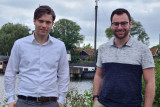
Door de bedrijven op bedrijventerreinen samen te laten werken aan integrale verduurzaming kan er op grote schaal duurzame energie opgewekt worden en CO2-uitstoot voorkomen worden. Samen met Greenchoice werken we aan een slim nieuw product: Smart Energy Systems.
CO2-uitstoot, onbenutte daken en netcongestie
Bedrijventerreinen zijn grootverbruikers van elektriciteit en bieden met hun grote dakoppervlakten ongekende mogelijkheden voor duurzame energieopwek. Toch wordt er op dit moment nog lang niet maximaal ingezet op de verduurzaming van deze gebieden. En als het al gebeurt, wordt kennis en kunde niet gedeeld, en worden oplossingen niet integraal op het hele terrein uitgevoerd. In plaats van samenwerken wordt er ingezet op de verduurzaming van één pand zonder te kijken naar de mogelijkheden om samen te verduurzamen, waar dan ook het teveel aan opgewekte energie teruggeleverd wordt aan het energienet. Dat verergert de al bestaande problemen met netcongestie.
Smart Energy Systems
In Smart Energy Systems hebben deelnemende bedrijven de keuze uit een ‘menukaart’ aan maatregelen. Daarop staan opties variërend van het plaatsen van zonnepanelen tot inzicht in verbruik tot het timen van je verbruik met je eigen opwek. Door die integrale aanpak en omdat meerdere bedrijven op het terrein tegelijkertijd verduurzamen kan er meer en sneller worden verduurzaamd.
Plug and play
Vanaf eind oktober begint de pilot bij drie bedrijventerreinen. De verwachtingen zijn hoog. Niet alleen voor de deelnemende bedrijventerreinen, maar ook voor toekomstige deelnemers. Door de ontwikkelingen op de markt goed in de gaten te houden en een vinger aan de pols te houden bij de pilotpartijen werken we aan de uitbreiding van de menukaart met nog meer duurzame en rendabele maatregelen, een gepersonaliseerde roadmap per terrein en een kopieerbare standaard voor nog meer impact.
Restwarmte Noord-Hollandse industrie kan hele provincie verwarmen
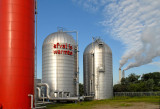
De Omgevingsdienst Noordzeekanaalgebied heeft in opdracht van de provincie Noord-Holland onderzoek gedaan naar de hoeveelheid beschikbare restwarmte in de Noord-Hollandse industrie. Het onderzoek geeft een eerste indicatie van hoeveel warmte er in Noord-Holland nu nog via industriële schoorstenen de lucht in gaat en hoeveel warmte er via het koelwater op het oppervlaktewater wordt geloosd. Met deze gegevens kunnen gemeenten en warmtebedrijven hun plannen voor nuttig hergebruik van restwarmte verder vormgeven.
Bijna alle relevante bedrijven in beeld
65 bedrijven in onder meer de energiesector, de chemische- en voedselindustrie, en afvalverwerkende bedrijven zijn meegenomen in het onderzoek. Deze bedrijven zijn verantwoordelijk voor meer dan 95 procent van de potentiële restwarmte. Hiermee zijn dus nagenoeg alle relevante industriële bedrijven in Noord-Holland in beeld. Of de warmte daadwerkelijk gebruikt kan worden voor verwarming van woningen is afhankelijk van onder meer de temperatuur en de afstand tot een warmtenet.
Gratis ophalen
Per 2022 komt er met de Wet Collectieve Warmtevoorziening een stimulans voor het gebruik van restwarmte in de gebouwde omgeving: producenten van restwarmte moeten deze dan gratis beschikbaar stellen aan energiebedrijven.
We avoided 2.071 tonnes of CO2 emission in 2020!
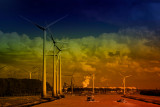
We avoided 2.071 tonnes of CO2 emission in 2020. The amount equals to 207 people’s yearly CO2 emissions. Are you wondering how we did it? Read our Impact Report!
Vacature: Finance Manager voor duurzame startup
Spectral zoekt een ervaren en gedreven Finance Manager. Ben jij het financiële brein dat ons verder helpt richting meer impact? Solliciteer snel!
Energy Tech x The Netherlands: Launch Event

Launching ETM Amsterdam, an accessible event series focusing on exploring the energy transition.
About
Ready to throw yourself into all things energy transition? We’re kicking off the Dutch chapter of the global Energy Tech Meetup movement.
ETM is the global community for energy innovation. Starting out in Tokyo, Energy Tech Meetup events have been bringing together startups, professionals, academics, investors, and students since the start of 2019. And now ETM is coming to the Netherlands and we want anyone and everyone who’s got energy on the 🧠 to be a part of our community.
In partnership with leading energy VC SET Ventures, we’re starting off our series with a special event on what’s shaking up the Dutch energy landscape. You’ll get fresh and varied insights from innovation departments, research gurus, and cutting-edge startups.
Sound good? Then come join our first event in Zoku, Amsterdam – you can exchange ideas, find new opportunities in energy or simply mingle over a beer.
And keep up to date on what's happening over on Instagram and LinkedIn 👀
Launch event
The Dutch energy sector is booming and we’re giving the floor to those who are right in the thick of it. You'll get the inside scoop on all things energy transition during our launch event from Energyworx, Gradyent, E-Flux BV, Eneco, SET Ventures, and more.
Here’s what to expect:
7:00pm - 8:00pm: We'll have guest speakers giving a broad perspective of innovation in the Netherlands. With a startup, corporate and academic view, we’ll discover where we should be sitting up and taking notice within the energy transition.
8:15pm - 9:00pm: Those on the ground building cutting-edge startups, will be telling us about the sectors that are core to the Dutch energy transition.
Location – Zoku
We’re over the 🌕 to link up with Zoku for our first event – a trendy, home-office hybrid, Zoku is all about building a community around sustainability, solidifying their commitment with attaining a B Corp certification back in 2018.
Tickets
ETM is run by volunteers and is a nonprofit, so we won’t be pocketing any of the dosh. The €5* gets you a free drink on arrival, so in the words of Wham...‘Club Tropicana, drinks are free. Fun and sunshine**, there's enough for everyone’.
*the tickets are non-refundable
**can’t guarantee sunshine, but yes to the free🍹
Work with the GreenTech Scale-up Vandebron

Vandebron is a scale-up in the energy world, with a mission to transform the energy market, starting with 100% green and local energy in the Netherlands. We are doing so by using state of the art technology that helps us distinguish ourselves from other utility providers. Our Digital team is looking for people that want to create a better world using software.
We create software that enables the energy transitions by balancing smart grids, facilitating electric mobility and producing more (local) green energy. Currently there are multiple open, technical positions:
Or also find some of our non-technical open positions here. Feel free to reach out to me in case you have any questions!
Note from ASC: Have a question? Let’s hear it in the comments.
Zoncoalitie - Altijd de beste keuze

Wat eind 2015 begon als een ambitieus initiatief vanuit Amsterdam Smart City, groeide uit tot een volwaardige en professionele organisatie dat nu alweer enkele jaren op eigen benen staat. Een mooi resultaat uit een jarenlange samenwerking met tientallen partijen, waaronder Alliander, de Gemeente Amsterdam, Tertium en natuurlijk de Zoncoalitie-leden zelf! Super gaaf om te zien hoe ver ze zijn gekomen. Mede dankzij de Zoncoalitie wordt het steeds makkelijker voor vastgoedeigenaren en gemeenten om zonnestroom van daken te krijgen.
Benieuwd waarom ik er over begin? De Zoncoalitie heeft een nieuwe bedrijfsvideo gelanceerd.
Klik hier om het te bekijken!
Livecast Pakhuis de Zwijger - Een veranderend landschap

Hoe kunnen duurzame energiesystemen passen in het Hollandse landschap? Welke afwegingen maken we op welke locaties? Hoe ziet ons landschap van de toekomst eruit? Vind de antwoorden op deze en meer vragen in de livecast van Pakhuis de Zwijger
Wanneer: maandag 28 juni
Hoe laat: 20:30 uur
Kosten: gratis
Ons landschap wordt al eeuwen bepaald door ons energiegebruik. Groene weides van nu waren eeuwen geleden ontginningsgebieden van veen en de idyllisch draaiende molens zorgde voor hout en voedsel. Ons landschap transformeert. De openbare ruimte wordt steeds vaker voor meerdere functies tegelijk gebruikt. Het opwekken van groene energie wordt ook steeds vaker een onderdeel van de gebouwde en natuurlijke omgeving.
Sprekers:
Jannemarie de Jonge is landschapsarchitect en partner bij Wing, een adviesbureau dat met overheden, bedrijven en maatschappelijke organisaties werkt aan duurzaam gebruik en ontwikkeling van de ruimte. Daarnaast is zij sinds 2020 Rijksadviseur van de fysieke leefomgeving.
Huib van Essen is gedeputeerde van de Provincie Utrecht met in zijn portefeuille ruimtelijke ontwikkeling, omgevingswet & energietransitie en klimaat. Huib is vanaf 2010 lid van GroenLinks.
Willem Hellevoort is ambassadeur natuurmonumenten in Noord-Holland, Flevoland en de Markerwadden. Natuurmonumenten beschermt plant en dier en geeft ze een stem in het beschermen van hun leefgebieden.
Jeroen Everaert is initiatiefnemer van het kunst initiatief Mothership. Mothership is een begrip in de kunst(wereld) dat gaat voor inspiratie en verwondering met lef. Ze denken mee over ruimtelijke projecten om functionaliteit en design met elkaar te verenigen.
Livecast Pakhuis de Zwijger - Nieuwe Bronnen

Om klimaatdoelstellingen te halen moeten we in 2030 35 Terrawatt Uur opwekken op land. De regionale energiestrategie biedt perspectief om deze opgave te halen. We denken dan vaak aan draaiende windmolens of glinsterende zonnepanelen, maar technische en ontwerp innovaties gaan snel. In dit programma kijken we vooruit naar 2030 en bieden we vergezichten voor de toekomst.
• Waar kunnen we op rekenen tot 2030?
• Welke innovaties moeten we in de gaten houden?
• Hoe wekken we onze energie duurzaam op in 2050?
Wanneer: maandag 21 juni
Hoe laat: 20.30 uur
Kosten: gratis
Sprekers
Arash Aazami is futurist, ondernemer en systeemvernieuwer. Hij studeerde jazz en rockgitaar, werkte als muzikant, en richtte daarna meerdere IT-startups op. In 2006 vond hij zijn roeping in de energiesector. Hij werd directeur van een energieleverancier en ontwikkelde een radicaal nieuwe kijk op onze energievoorziening, the Internet of Energy. In 2015 richtte Arash Kamangir op. Zijn team van wetenschappers, filosofen en creatievelingen ontwerpt de basis voor ons toekomstige energiesysteem en ontwikkelt langetermijnvisies voor toekomstige generaties.
Laetitia Ouillet is voorzitter van De Windvogel. Eerder werkte ze als directeur van de Strategic Area Energy bij de TU Eindhoven en als directeur Corporate Strategie bij energieleverancier Eneco. Op de TU Eindhoven coördineerde Laetitia samenwerking rondom energieonderzoek en gaf ze een stem aan energiewetenschappers in landelijke discussies.
Prof. dr. Gert Jan Kramer is sinds mei 2016 hoogleraar Duurzame Energievoorziening aan het Copernicus Instituut voor Duurzame Ontwikkeling aan de Universiteit Utrecht en hoofd van de Energy & Resources groep binnen dit instituut. Zijn interessegebied is de energietransitie als technisch en socio-technisch fenomeen.
De HvA realiseert energiepositieve wijken door Europa

Anderhalf jaar geleden kreeg Amsterdam een Europese subsidie voor het realiseren van een energiepositieve wijk (‘positive energy district’, ofwel PED) in hun stad. De Buiksloterham PED werd geboren. Onder leiding van Centres of Expertise Urban Technology (CoE Urban Tech) en Urban Governance and Social Innovation (CoE UGSI) van de Hogeschool van Amsterdam (HvA) werken onderzoekers vijf jaar lang aan deze nieuwe buurt, waar het energieverbruik gedekt moet worden door duurzame energie opgewekt in de buurt zelf. Waar staan we nu binnen dit Europese project, genaamd ATELIER, en welke kennis is er al opgedaan voor Europees belang?
Terwijl in Buiksloterham in Amsterdam-Noord de eerste steen is gelegd, zijn HvA-onderzoekers bezig met verschillende activiteiten in het project. De onderzoekers van CoE UGSI werken aan het vormgeven van het concept ‘energy citizenship’ en zullen de toekomstige bewoners van de PED betrekken in het onderzoek. Ook is een start gemaakt met het opzetten van PED Innovatieateliers binnen acht samenwerkende steden, verspreid over Europa. Elke stad richt een lokaal PED Innovatieatelier op voor de wijk. Dit lokale innovatie-ecosysteem tast samen de slimme oplossingen af op de lokale situatie, en het evalueert en ondersteunt de implementatie om het gebruik van PEDs in de stad te versnellen.
Next level samenwerken
Vanuit het perspectief van CoE UGSI, waar ze al veel ervaring hebben met multidisciplinair werken, is ATELIER next level samenwerken, vertelt Marije Poel, onderzoeker bij CoE UGSI. ‘Je ziet dat we echt goed van elkaar moeten begrijpen welke aspecten van een PED met elkaar te maken hebben en waarom: wat hebben bewoners nodig om straks te wonen in een energiepositieve wijk, zijn er technologische innovaties die vragen om nieuwe vaardigheden of kennis en gedrag van bewoners, en zal dit andere duurzamere gewoontes stimuleren? We weten nu na 1,5 jaar nog beter wat we vanuit de meer sociale kant willen en kunnen onderzoeken, en hoe dat ingrijpt op het gehele project. En daarmee ook hoe we het project straks willen evalueren op sociaal maatschappelijke impact.’
CoE Urban Tech richt zich onder andere op de impact-assessment door modellering van het energiesysteem. Zijn de PED-demonstratieprojecten echt energiepositief? Renée Heller, Lector Energie en Innovatie: ‘Wij werken aan de modellering van de Amsterdamse pilot en zijn complexe context. Daarnaast onderzoeken wij mogelijke toekomstige optimalisaties. Met studenten van onze minor Energiepositieve stad hebben we de eerste ideeën verkend over PEDs voor andere delen van Amsterdam-Noord waar geen ‘greenfield’ is (bij greenfield-projecten begin je met een volledig onontwikkeld gebied). De uitdaging is om het concept op te schalen naar zowel ‘brownfield’-situaties (gebieden die al enige ontwikkelingen hebben doorgemaakt) als andere steden.’
Europese samenwerking
Amsterdam werkt nauw samen met de Spaanse stad Bilbao (Lighthouse Cities), waar een vergelijkbare wijk als Buiksloterham wordt gebouwd. De andere betrokken steden (Fellow Cities) zijn Bratislava, Boedapest, Kopenhagen, Krakau, Matosinhos en Riga. Zij gaan later met de opgedane kennis en ervaring aan de slag, omtrent de ontwikkelde innovaties en technieken. Sara Rueda Raya (FME ) organiseert deze samenwerking: ‘De Fellow Cities zetten zich hard in voor het project; elke betrokken stad was aanwezig bij de eerste twee peer2peer-sessies. Het is echter moeilijk om sommige steden actief te laten deelnemen aan discussies en gesprekken. Ik voel enige afstand tussen bepaalde steden, wat te maken kan hebben met de taalbarrière. We moeten daarom verder werken aan community-building.’
Studenten betrokken en trainingen in ontwikkeling
De komende tijd ondersteunen studenten van de Universiteit van Utrecht het ATELIER-team door middel van een student consultancy-project over de PED Innovatieateliers. Daarnaast zijn er ook seminars en trainingen in ontwikkeling die aan de Fellow Cities gegeven zullen worden. Tenslotte is de HvA ook verantwoordelijk voor de evaluatie van de activiteiten en het project als geheel.
ATELIER is met haar inhoudelijke en organisatorische complexiteit en multidisciplinariteit een grote uitdaging, vertelt projectleider Mark van Wees. ‘Zeker omdat we als HvA overal de innovatie opzoeken. Soms denk ik dat we teveel hooi op onze vork nemen, maar meestal ben ik erg tevreden over het enthousiasme van ons HvA-team en de inbreng die we daarmee in het project hebben. De komende periode moeten we het ook echt gaan waarmaken.’
Meer informatie
Bij CoE Urban Tech zijn Renée Heller, Karen Williams, Rick Wolbertus, Viktoria Balla-Kamper, Shakila Dhauntal, en Mark van Wees betrokken. Het CoE UGSI-team bestaat uit Marije Poel, Beatriz Pineda Revilla, Loes Cremers, Stan Majoor, Willem van Winden, en Sara Rueda Raya.
11 building blocks for the transition to sustainable energy

In five consecutive blog posts, I have explored the opportunities and risks in the energy transition of carbon capturing and storage (CCS), biomass, geothermal energy, hydrogen, and nuclear energy, in addition to solar and wind. Find my conclusions below:
1. Sun and wind energy
I will feel most comfortable in a world deploying energy provided by sun and wind to reduce greenhouse gas emissions. This implies a huge transition, which, also brings significant benefits for an emerging sustainable economy.
2. Nuclear energy plants
Instead of opting for an expensive third-generation nuclear power plants, we better invest in the development of fourth generation nuclear energy plants, such as Thorium, or molten salt reactors. Their waste is limited, and they are inherently safe. These reactors could potentially replace outdated wind turbines and solar panels from 2040.
3. Using less
We must also continue using less energy, without undue expectations. After all, clean energy can potentially be abundantly available in the long term, although this is particularly relevant for developing countries.
4. Hydrogen energy
In addition to the use of solar and wind energy, I am opting for hydrogen. It will be used for heavy industry, to level discrepancies in the supply and demand of energy and as an additional provision for heating buildings and houses. The presence of a high-quality gas network is easing this choice. In addition, we use residual heat, biomass of reliable origin and we exploit geothermal energy where its long-term availability is assured.
5. Energy from the desert
By no means we are producing all necessary hydrogen gas ourselves. The expectation is realistic that after 2030 it will be produced in deserts and transported from there at a competitive price.
6. Wind turbines and solar panels
The North Sea and the IJsselmeer will become the most important places for the extraction of wind energy. Besides, solar panels are installed on roofs wherever possible. We care for our landscape and therefore critically consider places where ground-based solar panels can be installed and where wind turbines are not disturbing. Part of the wind energy is converted into hydrogen on site.
7. Capture and store CO2
It could easily last until 2040 before the import and production of hydrogen meets our needs. Therefore, we must continue to use (imported) gas for quite some time. To prevent greenhouse gas emission, significant capacity to capture and store CO2 must be in place.
8. Gas and coal
Given the availability of temporary underground storage of CO2, premature shutting down our super-efficient gas and coal-fired power stations it is unnecessary capital destruction. They can remain in operation until the facilities for solar and wind energy generation are at the desired level and sufficient hydrogen gas is available.
9. Local energy
Energy co-operations facilitate the local use of locally produced energy, thus enabling lower prices, and limiting the expansion of the electricity grid. To this end, private and neighborhood storage of electricity is provided.
10. Biomass
Reliably collected biomass is deployed as raw material for the biochemical industry in the first place and can further be used for additional fueling of coal and gas-powered stations (with CO2 capture) and as local energy source for medium temperature district heating networks.
11. Take some time
Finally, we must take enough time to choose the best way to heat buildings and houses at neighborhood level. Getting off gas prematurely can induce wrong choices in the longer term. A gradual phasing out of gas heating will enable us to wait longer for the moment when hydrogen (gas) is available to replace the natural gas in neighborhoods where it is the best solution.
Meet the five stepdaughters of the energy transition
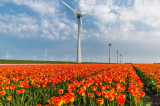
Last months, I wrote short essays about controversial aspects of the energy transition: geo-engineering (CCS included), biomass, geothermal energy, hydrogen and nuclear power (in Dutch). With these articles I tried to clarify my thoughts and to share my conclusions with others. At the end of the fifth article, I arrived at a - provisional - conclusion in 11 short phrases. I wonder whether you agree....
Stay up to date
Get notified about new updates, opportunities or events that match your interests.

